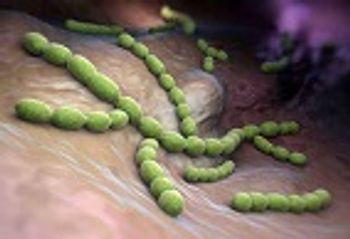
Researchers at the University of Washington may have gained new insight into exactly how Zika virus infection damages the developing brain of the fetus in pregnant women.

Researchers at the University of Washington may have gained new insight into exactly how Zika virus infection damages the developing brain of the fetus in pregnant women.

For consumers ordering pre-packaged foods, the United States Department of Agriculture recommends following several food safety tips.

Researchers from the University of Valencia have taken part in an international study that has found that gut bacteria play a role in immune system recovery in HIV patients.

A recent study has shown that disabling bacterial flagella could prove to be an effective new method by which to fight some bacterial infections.

Zika’s history as a “tropical” disease plays into the theory that global warming has played a role in the presence of virus-carrying Aedes Aegypti and Aedes Albopictus mosquitoes, and thus the disease itself, in heretofore “temperate” climates such as the southeastern United States.

Pregnant women or women planning to become pregnant concerned about the effects of Zika on their health as well as the health of their unborn children have another potential complication to worry about: miscarriages.

The CDC recently announced that their investigators have identified a strain of Escherichia coli with the colistin-resistance gene mcr-1 in a Connecticut child, in what is now the fourth patient in the United States to test positive for an isolate with mcr-1.

The mainstream media has put the Florida Department of Public Health (DOH) on the defensive over Zika.

Nearly 900,000 people in the United States get pneumococcal pneumonia each year, resulting in about 400,000 hospitalizations annually.

The FDA has granted biopharmaceutical company, MGB Biopharma’s lead candidate, MGB-BP-3, Qualified Infectious Disease Product (QIDP) designation for the treatment of Clostridium difficile-associated Diarrhea.

Dubbed 'the perfect pathogen' by researchers, norovirus possesses all the markers of an ideal infectious agent.

A new study led by researchers at the University of Oxford has offered insight into what happens when pharmaceutical drugs do not work as expected.

The US military has been actively engaged in the battle against Zika, even as more than 100 members of the armed services have been diagnosed with the mosquito-borne virus.

A new study has shown that infected wild house mice will disengage from their social groups, resulting in a decreased potential for disease transmission; these findings can be applied to improve models used to predict transmission of infectious diseases spread by social contact, such as Ebola and influenza.

As more people are choosing to keep live poultry as pets, educating the public on appropriate health and safety guidelines has become a priority. In response, the CDC is offering recommendations to backyard flock owners.

Nearly a decade ago, 130 Veterans Health Administration facilities around the country introduced their methicillin-resistant Staphylococcus aureus (MRSA) Preventive Initiative to reduce transmission of the “superbug” in their hospitals and health centers.

A new test that can effectively estimate HIV-negative patients’ adherence to prescribed drugs to prevent the transmission of human immunodeficiency virus (HIV) during sexual intercourse has been discovered by researchers at the Skaggs School of Pharmacy and Pharmaceutical Sciences at CU Anschutz.

New research from Washington University in St. Louis may explain why those with blood type O become more severely ill from cholera.

An anxiously awaited vaccine for the fight against Zika may be available sooner rather than later—if its developers and federal health officials get their way.

According to new research, applying antimicrobial coatings to whole cantaloupes during storage significantly reduces contamination and has the potential to improve their microbiological safety and extend their shelf life.

For the first time, the National Antimicrobial Resistance Monitoring System includes whole genome sequencing data of bacteria from individuals with antibiotic-resistant Salmonella infections.

A recent study has shown that Borrelia burgdorferi, the bacterium that causes Lyme disease, spreads throughout the body by crawling along the inside wall—the endothelium—of blood vessels.

Researchers from Nanjing Biopoint have made a breakthrough when it comes to fighting HIV through the development of a product that uses certain material when collecting blood samples that can separate the plasma from the rest of the blood, allowing the sample to be safely sent to a testing center.

A voluntarily recall of 2.25 oz and 4 oz packages of Diamond of California Macadamia Nuts has been initiated after a sample tested positive for Salmonella contamination.

A multidisciplinary team of researchers from Washington University in St. Louis, Missouri and Colorado State University in Fort Collins, Colorado, may have identified another potential pathway for transmission of Zika virus: tears.

In a new ruling, the US Food and Drug Administration (FDA) has declared that companies selling over-the-counter antiseptic washes will no longer be allowed to market their products as such due to doubts over these products’ safety and effectiveness.

Tanner White, a marine who has been diagnosed with HIV is making strides in fighting HIV-associated stigma by providing the public with education on the virus through the creation of his nonprofit organization called, “A Positive Tomorrow.”

A collaborative study at Michigan State University could lead to Escherichia coli (E. coli) bacteria prevention practices in the cattle farming industry.

On September 5, officials in the Philippines confirmed the first case of Zika in the nation, an indication that the virus is spreading throughout much of Asia.

Utah Department of Health officials are investigating a cluster of illnesses associated with raw milk from Heber Valley Milk in Wasatch County.